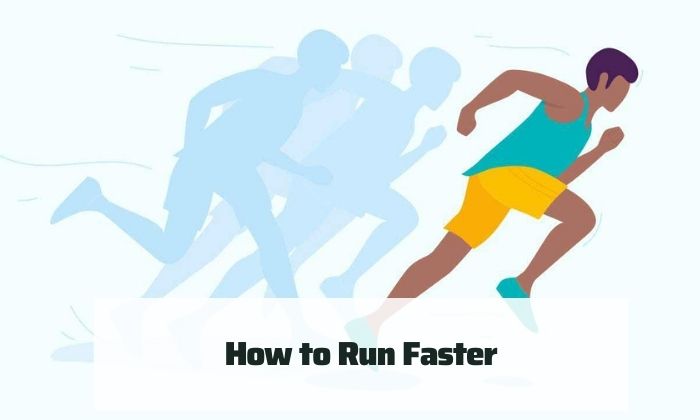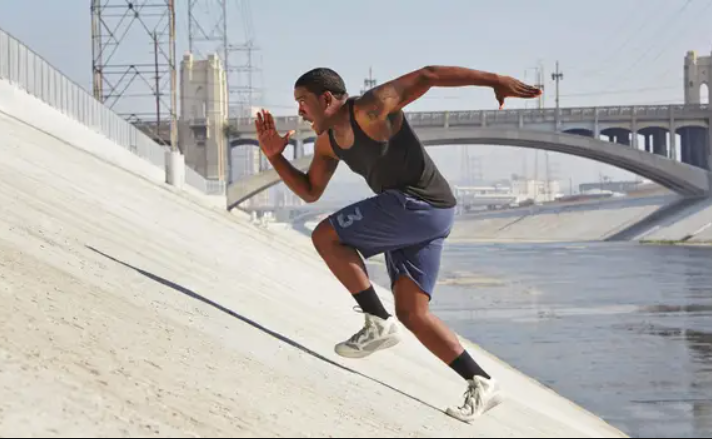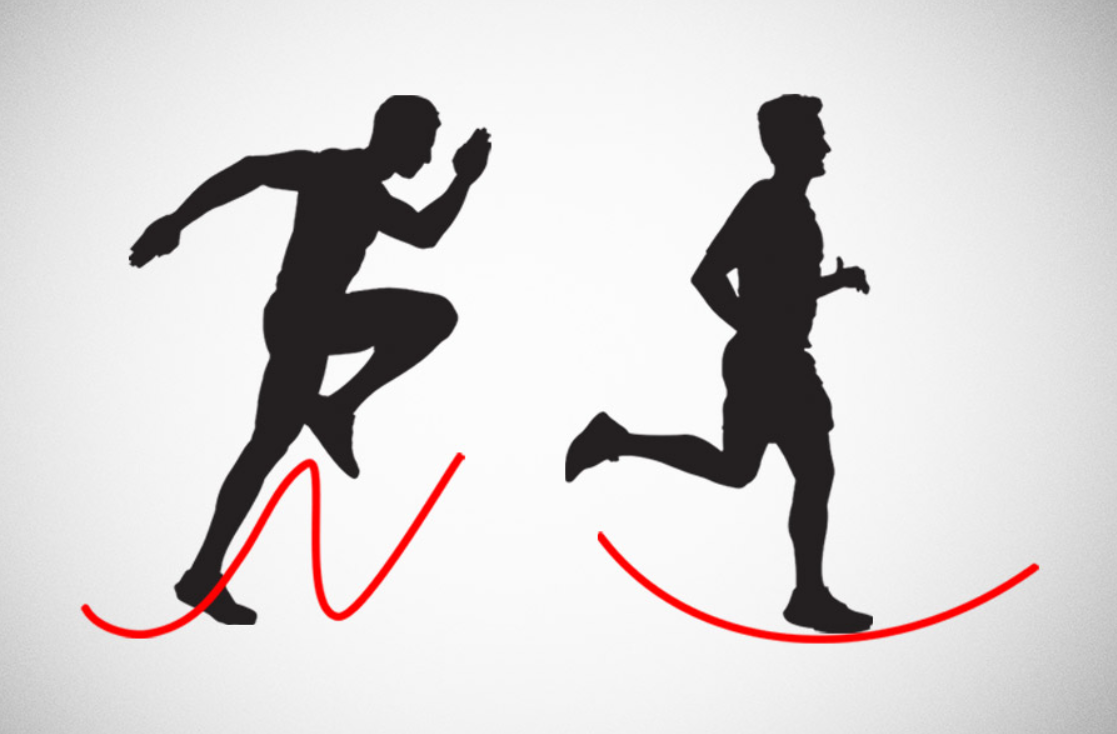How to Run Faster – 8 Ways to Improve Running Speed

A faster pace can be exciting for runners, and it is also beneficial to your overall health.
“When we introduce a new stress, like speed training workouts, to our body, we get stronger, faster, fitter, and leaner,” says Elizabeth Corkum, a Road Runners Club of America certified running coach.
Whether you want to speed up for a race or just to get a little more out of your workouts, here are seven tips how to run faster.

1. Lose Weight
This is a difficult one to put on this list. Runners come in all shapes and sizes, as we all know. But there’s no denying that the less weight you have to move, the easier it is to do so. Maybe you want to lose a couple of pounds, or maybe you want to lose five to ten pounds. Your running speed will be affected by the amount you choose.
The most common rule of thumb is that for every pound lost, you can expect to gain about 1% in speed. That doesn’t seem like much, does it? However, if you’re attempting to break a personal record or simply want to see what your body and training are capable of, swapping out a couple of snacks for more fruits and vegetables may be worthwhile.
2. Focus on Core Strength
If you’re learning how to run faster, you might not consider your core as a potential area for improvement. After all, it’s your feet that will get you from point A to point B in the shortest amount of time. Taking a look at your midsection, on the other hand, may result in a little more oomph in your speed training.
During physical activity, your core muscles are in charge of keeping your spine stable. They not only keep you upright while running, but they also help to prevent excessive rotation. Normally, the contralateral movement—one arm forward and the opposite leg backward—would cause you to twist side to side. The movement of your upper and lower bodies helps to blunt that rotation, and your core fills in the gaps. Instead of wasting energy in rotation, it keeps you stable and moving forward.
A strong core can also help relieve hip pain and fatigue. To bring your leg forward and out in each stride, your deep core muscles should work in tandem with your hip flexors, glutes, and hamstrings. The more efficiently your feet can move, the better your running economy and the faster you’ll be able to move.
To run faster, try training your core with these exercises.
3. Optimize Your Breathing
If you’ve ever done speedwork, you know how quickly your breathing and heart rate can increase to an uncomfortably high level. You’ll even get a chance to practice that uneasy feeling in the exercises that follow this article.
Make the transition easier by practicing your breathing before getting on the road or into the workout. When you learn how to avoid shallow chest breathing and instead fill your lungs with belly breathing, you will bring more air into your body with each breath. More air means more oxygen reaching your muscles.
4. Clean Up Your Diet
How energized do you feel after a less-than-healthy meal versus a colorful, fresh plate? Most likely, not so good. If you want to learn how to run faster, one of the simplest places to start is by improving your diet.
Examine your eating habits objectively. Are you staying hydrated throughout the day, or are you just chugging water before you get in the car? Is your daily vegetable serving limited to pale iceberg lettuce, or do you regularly consume dark, leafy greens? While kale won’t make you faster, it will provide you with a lot of vitamins, minerals, and antioxidants. All of this will help you feel better, recover faster, and possibly lose a little weight as your fiber intake increases.
What you eat while on the go is unquestionably important. But keep in mind that you spend a lot more time eating when you’re not running, giving you a lot more chances to make significant changes. Whole-grain carbs, plenty of fruits and vegetables, and limiting junk food will all help you feel your best for your next workout or race day. Check out this post to learn more about how to improve your running through diet!
5. Warm Up to Run Faster
Your body needs to warm up before you ask it to run faster, just like it does before any other run or hard effort. The first rep of an interval workout is often the most difficult because your body needs to adapt to the increased effort by delivering more oxygen to your muscles.
All of your muscles will be firing and ready to work on some faster running after a proper warm-up. If it takes you 10-15 minutes at the start of your workout to feel loose and ready to go, you probably need to do a little more prep work before your big effort. However, if you take the time to warm up before your run, you will be better prepared for your workout.

6. Nail Your Form with Pre-Run Drills and Strides
Running at top speed necessitates a total-body effort. When your body becomes tired, your form begins to deteriorate, causing your stride to become less efficient and slowing you down. Running with proper form will allow you to run faster and avoid injury.
Proper running form includes everything from your head to your toes. For an efficient stride, your body should be aligned and your posture should be tall. Your hips and shoulders should be working together to help you relax and allow the rest of your body to fall into place.
An engaged core, forward hips, and tall shoulders improve your legs’ ability to generate power from the glutes and hamstrings and allow for a driving arm swing.
Running faster will be easier and less likely to cause injury once your body is aligned and activated. Include these running form drills in your warm-up or stride-out session.
7. Prioritize Recovery and Maintenance
Do you have any questions about your recovery or injury prevention? Our app is ideal for you!
Your body must be loose in order to run at top speed.
Preventing soreness and injury by rolling out on a foam roller and stretching each muscle on a daily basis.
Focus on opening up your hips to allow for a longer stride. Because speed is a function of stride length multiplied by stride rate, opening up the hips increases your ability to reach top speed.
Sleep, hydration, and nutrition, as always, play a role in keeping your body happy, healthy, and primed to improve running speed.
8. Sharpen Your Mental Game to Sharpen Your Speed
Running at uncomfortable speeds necessitates a high level of mental toughness. When your legs are heavy and the pace is uncomfortable, it is easy for negative thoughts to enter your mind. Doubting your ability and wanting to slow down are both tempting, but you often have more in the tank than you realize and can run faster than you believe possible.
To run faster, you must not only increase your physical strength but also your mental strength. Workouts and long runs in your training can help you develop mental toughness. Take advantage of these higher-intensity runs to train your mind to learn how to run faster.
A Word From Verywell
If you want to increase your endurance and train your body to run faster, try incorporating any of these suggestions into your running routine. Whether you’re new to running or a seasoned competitor, remember to listen to your body whenever you’re training. If any of the exercises suggested cause you pain or extreme discomfort, stop immediately.
Furthermore, some of the suggestions listed may not be appropriate if you have certain health or medical conditions. If this is the case for you, always consult your doctor before beginning any new workout routine. See more useful article at my website y2kcenter.org




